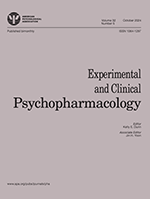
“This article discusses the controversial but promising topic of medical marijuana (MM) use in the pediatric population with epilepsy. Included is the importance of MM throughout history, the pharmacodynamics and pharmacokinetics, and a literature review that provides anecdotal evidence of the positive effect MM has on children suffering from seizures. From this literature review, dosage for treatment and management is provided. Also discussed is the recent FDA-approved pharmaceutical grade CBD product, Epidiolex, for treatment of two pediatric-onset seizure syndromes, Lennox-Gastaut and Dravet. Clinical implications regarding adverse side effects of MM use are also discussed. The aim of this article is to arm providers with contemporary knowledge on the risks and benefits of MM use in the pediatric population with epilepsy, which may boost their skills and confidence in educating and advocating for children with seizures. This novel, ever-changing medication is in the forefront of history and the news, making this topic especially important for review.”


 “The administration of cannabidiol has shown promising evidence in the treatment of some neuropsychiatric disorders, including cocaine addiction. However, little information is available as to the mechanisms by which cannabidiol reduces drug use and compulsive seeking.
“The administration of cannabidiol has shown promising evidence in the treatment of some neuropsychiatric disorders, including cocaine addiction. However, little information is available as to the mechanisms by which cannabidiol reduces drug use and compulsive seeking.


 “There can be a fine line between therapeutic intervention and substance abuse, and this point is clearly exemplified in herbal cannabis and its products. Therapies involving cannabis have been the treatment of last resort for some cases of refractory epilepsy, and this has been among the strongest medical justifications for legalization of marijuana. In order to circumvent the narcotic effects of Δ9-tetrahydrocannabinol (THC), many studies have concentrated on its less intoxicating isomer cannabidiol (CBD). However, CBD, like all natural
“There can be a fine line between therapeutic intervention and substance abuse, and this point is clearly exemplified in herbal cannabis and its products. Therapies involving cannabis have been the treatment of last resort for some cases of refractory epilepsy, and this has been among the strongest medical justifications for legalization of marijuana. In order to circumvent the narcotic effects of Δ9-tetrahydrocannabinol (THC), many studies have concentrated on its less intoxicating isomer cannabidiol (CBD). However, CBD, like all natural 
